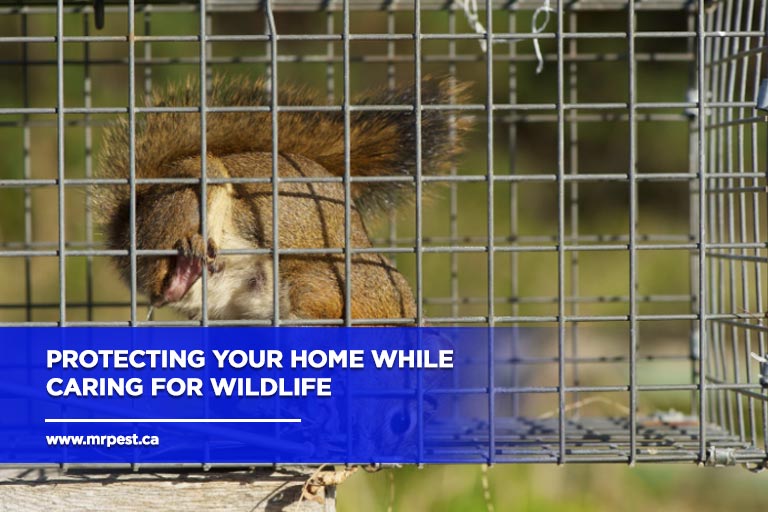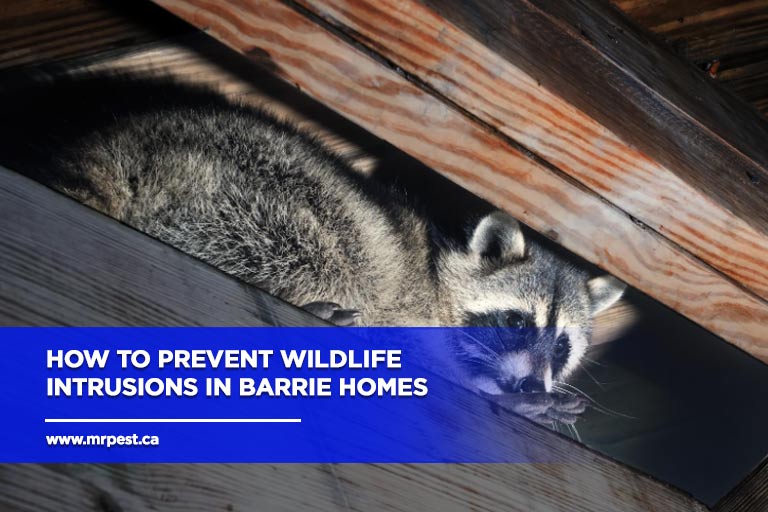Living in Barrie offers the charm of being close to nature, but sometimes that closeness brings uninvited guests into our homes. From raccoons to squirrels, wildlife intrusions can cause significant damage and pose health risks.
Understanding how to protect your home from these crafty critters is essential for maintaining a safe and peaceful living environment. Let’s explore practical steps to keep wildlife where it belongs – outside your home.
Understanding Wildlife Intrusions
In Barrie, encountering wildlife is part of the charm of living close to nature. However, when these animals decide to make your home their own, it becomes a real problem. Common invaders include raccoons, squirrels, skunks, and even bats. These animals often seek shelter, food, or a safe place to raise their young.
Unfortunately, their presence can lead to chewed wires, contaminated food, and damaged property, not to mention the potential health risks they pose through bites or the diseases they can carry.
Understanding why wildlife intrusions occur is the first step in prevention. Animals are driven by basic needs – food, water, and shelter. When they find easy access to these essentials in or around your home, they are more likely to move in.
Knowing the types of animals common to Barrie and their typical behaviours can help you identify the vulnerabilities in your home and lawn that may be inviting these unwelcome guests.
Securing Entry Points

All possible entry points must be covered
The most effective way to prevent wildlife from entering your home is by securing all potential entry points. Wildlife like raccoons, squirrels, and bats are incredibly resourceful when it comes to finding ways to enter. Common entry points include chimneys, attic vents, gaps in the eaves, and even tiny cracks in the foundation.
- Begin by conducting a thorough inspection of your home’s exterior. Look for any signs of entry, such as chewed wood, loose shingles, or droppings. Pay particular attention to the roofline and foundation, as these are prime areas for intrusions. Once you’ve identified potential entry points, it’s time to seal them.
- For chimneys, consider installing a sturdy cap that allows smoke to escape but keeps animals out. Attic vents and eaves can be protected with heavy-duty mesh or screens. Ensure all windows and doors fit tightly and repair any damage immediately. For smaller cracks and holes, a combination of steel wool and caulk can effectively block access.
- Using the right materials is crucial. Opt for metal flashing, hardware cloth, and durable sealants that animals can’t easily chew through.
These measures are equally effective for both urban residences and rural properties, making them a valuable part of cottage pest control strategies.
Lawn Maintenance Tips
A well-maintained property is your first line of defence against wildlife intrusions. Animals are often attracted to yards that provide easy access to food and shelter.
- Start by ensuring that all trash and compost are securely stored. Use wildlife-proof bins with tight-fitting lids to prevent raccoons and other scavengers from rummaging through your garbage. Compost bins should be well-sealed and regularly turned to minimize odours that attract animals.
- Regularly clean up fallen fruit, nuts, and birdseed from the ground. These can be irresistible to wildlife looking for a quick meal. If you have bird feeders, place them away from your home and use catch trays to reduce spillage.
- Trim tree branches that are close to your roof to prevent animals from using them as a bridge to your home. Keep bushes and shrubs well-pruned and away from the sides of your house, as these can provide cover for wildlife.
- Consider using natural deterrents to keep animals at bay. Plants like lavender and mint can act as repellents due to their strong scents.
Safe and Humane Deterrents
Keeping wildlife at bay doesn’t have to involve harsh methods. There are several safe and humane deterrents you can use to discourage animals from entering your property. These methods not only protect your home but also ensure the well-being of the wildlife.
“Making a difference to the welfare of Animals doesn’t require a massive effort; it requires small actions that can make a significant impact.” – Paul Oxton
- One effective deterrent is installing motion-activated lights and sprinklers. These devices will startle animals without causing them harm. When triggered, the sudden burst of light or water will scare off intruders and discourage them from returning. Place these devices near common entry points and around your lawn for maximum coverage.
- Use natural repellents. Certain scents, like peppermint oil, cayenne pepper, and ammonia, are unpleasant to wildlife. Soak cotton balls in these substances and place them around potential entry points and areas where animals are likely to gather. However, be sure to replace them regularly to maintain their potency.
- Create physical barriers. Fencing and netting can be used to protect gardens, flower beds, and other vulnerable areas. Opt for fencing that is at least four feet high and extends several inches underground to prevent animals from burrowing underneath.
- Consider installing one-way doors at entry points, if you’re dealing with persistent wildlife issues. These doors allow animals to leave your home but prevent them from re-entering. This method is particularly useful for dealing with animals that have already taken up residence in your attic or crawl space.
Dealing with Existing Wildlife Intrusions

Protecting your home while caring for wildlife
If you suspect that wildlife has already invaded your home, it’s important to address the situation promptly and humanely. Recognizing the signs of an intrusion and knowing how to safely remove the animals can prevent further damage and ensure both your safety and that of the wildlife.
- First, look for signs that indicate the presence of wildlife. Common indicators will include unusual noises like scratching, scurrying, or squeaking, especially at night. You might also find droppings, nesting materials, or noticeable damage to insulation, wiring, or structural elements.
- Once you’ve confirmed an intrusion, it’s crucial to identify the type of animal you’re dealing with, as different species require different approaches. For instance, raccoons and squirrels might be nesting in your attic, while bats often hide in dark and secluded areas.
- To remove the animals, start by using humane traps. These traps will capture the animal alive without causing harm. Once trapped, you can release the animal back into the wild at a safe distance from your home. Be sure to check local wildlife regulations to ensure compliance with relocation practices.
- In cases where the intrusion is extensive or involves potentially dangerous animals like skunks or bats, it’s best to call a professional wildlife control service. These experts have the experience and equipment to safely and humanely remove wildlife from your home. They can also offer advice on preventing future intrusions.
- After removing the animals, thoroughly clean and sanitize the affected areas to eliminate any traces or scent that might attract other wildlife. Repair any damage caused by the animals and reinforce potential entry points to prevent re-entry.
Keep Your Home Wildlife-Free
Protecting your home from wildlife intrusions is crucial for maintaining a safe and comfortable living environment. By understanding the behaviours of common intruders, securing entry points, and using humane deterrents, you can keep your home wildlife-free.
If you’re dealing with persistent issues or need professional assistance, don’t hesitate to contact Mr. Pest Control for expert wildlife control in Barrie. Call us today at (705) 739-7378 to ensure your home stays protected and secure.



